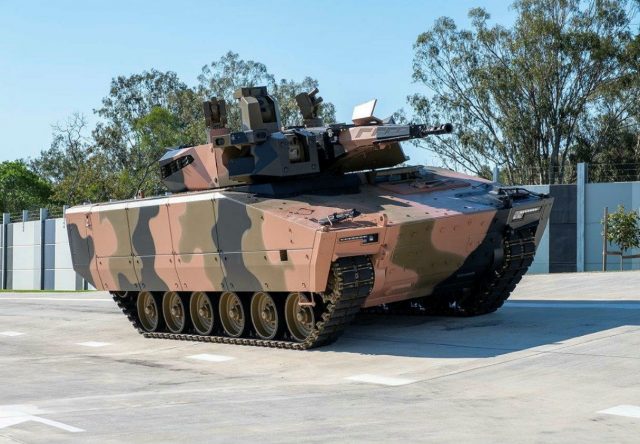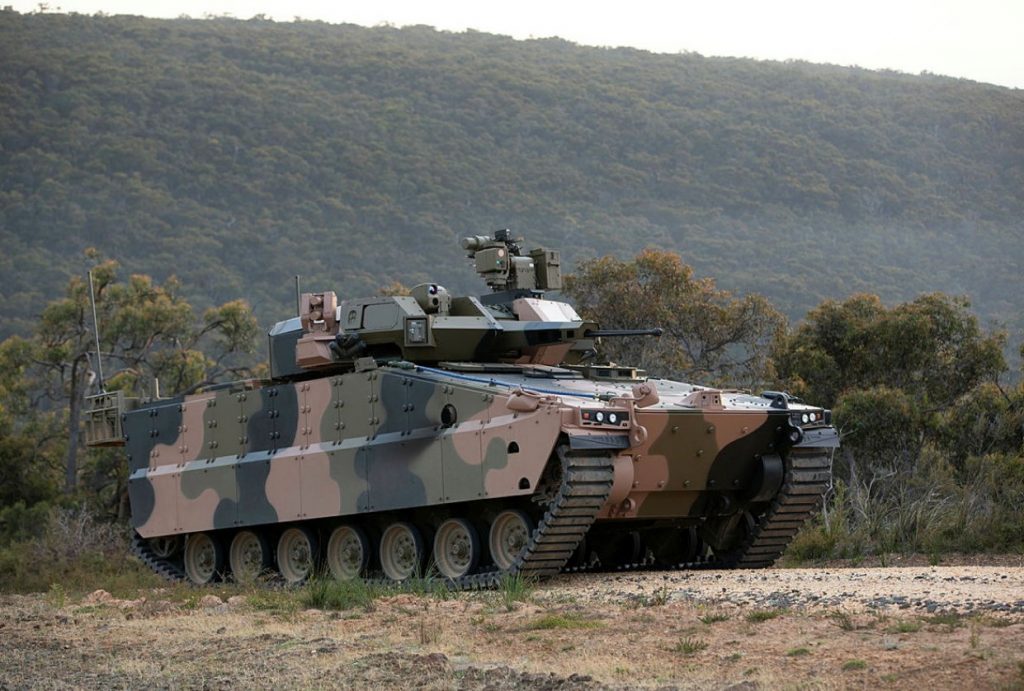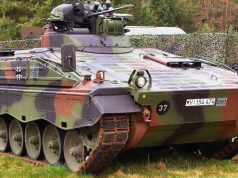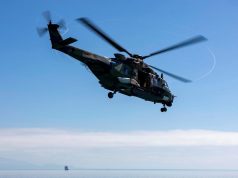
The Australian defense ministry announced it has received all six prototype vehicles that will help inform the government’s decision on the procurement of the next-generation infantry fighting vehicle as part of LAND 400 Phase 3 program.
Australia is investing between A$18.1 and A$27.1 billion in the army’s new close combat vehicles and is expecting to select a winner in 2022.
Hanwha Defense Australia and Rheinmetall Defence Australia have each delivered three prototype vehicles – two for test and evaluation activities and one for blast testing – as part of the two-year risk mitigation activity.
Hanwha is offering its Redback IFV equipped with an active protection system from Elbit and Plasan’s armor. Redback is armed with an Mk44S Bushmaster II 30mm cannon a co-axially mounted 7.62mm machine gun. The company says it would build the vehicles at its facility in Greater Geelong if it wins the tender.
The Lynx KF41 vehicle offered by Rheinmetall weighs around 40 tons and can carry 3+8 soldiers. Lynx includes the digital Lance turret with electronic architecture common with the Boxer 8×8 CRV the company is already delivering to Australia.

Australian defense minister Linda Reynolds said the delivery of the prototype vehicles was a crucial step in the project, allowing the defense ministry to assess the shortlisted tenderers’ performance claims focusing on the highest areas of technical risk.
“These significant activities include Australian soldiers participating in user evaluation and testing, with a particular focus on the armor, firepower and mobility of the platforms,” minister Reynolds said.
“The risk mitigation activity will undertake important analysis on each vehicle’s ability to integrate with other key ADF land, sea and air capabilities, including amphibious lift.
“The infantry fighting vehicle will be a tracked armored vehicle, capable of carrying six soldiers in addition to a crew of three. These advanced vehicles will provide increased protection, mobility, and firepower for the ADF.”
The project will acquire up to 450 IFVs and a maneuver support vehicle capability comprising up to 17 vehicles.
“When delivered, the infantry fighting vehicle will allow army to successfully sustain mounted close combat operations against emerging and future threats as part of the joint force,” minister Reynolds said.


























